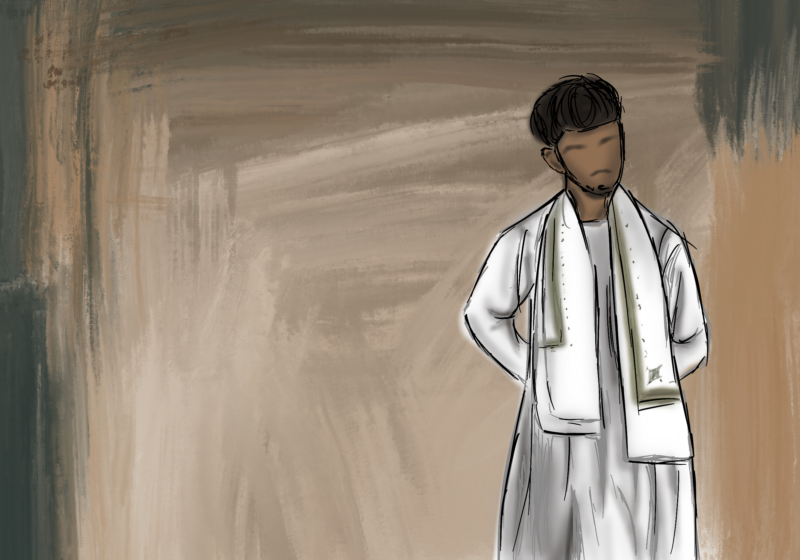The technology that pop culture has been warning us about for decades is finally here. From brain integrated computer chips to general artificial intelligence, we are being flooded by sci-fi villain technologies. The newest of these transformative inventions: the Apple Vision Pro.
The fully immersive headset brings the user into a new world with the tap of a finger. Their new “spatial computing” technology, paired with a 23 million pixel display and natural interaction through eye, voice, and hand tracking, takes the user experience to the next level. In their press release, Apple calls this the “beginning of a new era for computing,” as they have seemingly turned the industry on its head once again.
The feature that really sets the Vision Pro apart from its competition may also be the most terrifying. The new visionOS is by far the best attempt at replacing our daily technology with a computer on your face, including intuitive inputs and productive applications that bring the best of both the conventional Mac and virtual reality. Spatial software and object locking — which is what keeps the windows in place while moving around — have proven to be extremely difficult to implement, making Apple’s state-of-the-art tracking technology stand out.
In fact, they claim their product is so different from what is currently available that they haven’t even used the words “virtual reality” to describe the Vision Pro, as pointed out by Marques Brownlee of MKBHD. The Vision Pro truly stands alone while still fitting in with the rest of Apple’s product line. It has the same look and feel of the iPhone and Apple Watch, yet it can do things that these products have never done before.
As an Optics major, I find this to be one of the most technically amazing pieces of technology of the last several years. Since the announcement of its release, I’ve been eager to give it a try to see how it compares to other headsets. I was lucky enough to meet senior Xiang Tang, a Take 5 student majoring in Biomedical Engineering, Economics, and Math who is also an early adopter of the Vision Pro. While he’s only had it for about two weeks now, he let me try it on and see the future of personal technology for myself.
The first thing I noticed was the resolution. After performing the eye calibration, the real world comes back through the fog, and I could barely tell that I was wearing anything. Navigating the software is simple and has that distinct Apple feeling, with a clean design and frosted windows just like on an iPad. Clicking, dragging, and selecting are seamless, intuitive, and so much easier without controllers — it’s just as natural as scrolling and swiping on an iPhone. The spatial tracking has a much wider range than I anticipated — you can rest your hand on a table in front of you or on your lap, and as long as it can see your fingers, you can interact with the display.
By far the most impressive feature was the object locking. Any window I placed in the air in front of me stuck in place, letting me walk by it as if it were a regular TV screen. Even with multiple windows pulled up, it’s as easy to use as a regular Mac; you can resize and place windows just by looking at them and pinching.
The passthrough feature brings the experience of the Vision Pro to another level. Imagine working on homework while you watch Earth rise over the surface of the moon and Tuesday night NBA games are on a 100 foot screen off to the right. It’s truly a unique productivity tool, and I can already see how this would be useful to students.
In the future, I could definitely see the Vision Pro being used to teach students around the world. History class would be much more interesting when you can relive the signing of the Declaration of Independence. Difficult concepts in 3D mathematics and the scale of the universe would become a lot easier to explain. There’s never been an educational tool quite like this — an entirely new dimension queued at the tap of a finger, ready to take students’ understanding to the next level.
Xiang offered some great insight into his time with the Vision Pro. After seeing the promotional event and tech reviews online, he decided to make the $4,000 purchase. So far, he has put the technology to good use, increasing his productivity. He says that “it’s been great for multitasking, but the weight is noticeable.” Even though the battery is attached separately, the headset itself has a similar weight to its competitors. The weight is all in the front, which pulls on the user’s head and hurts their neck. Within a few minutes of me putting it on, I could definitely see how longer term use could become uncomfortable. However, the included battery currently only has a little over an hour of use in it, so it’s definitely better suited for short term use anyway.
Where does this leave us? When asked about the reaction he has received so far, Xiang brought up the “social burden” of being a pioneer of the technology. It’s still new, and the general public isn’t quite ready for mixed reality tech to become a part of everyday life. He still feels weird when wearing it in public, but he sees it as the start of something new. It’s like the first generation of smartphones; at the time, they were a novel concept, but 20 years later they now live in nearly everyone’s pockets.
But will it take on the role of the next iPhone, or will the gimmick lose its shimmer and be swept aside in the coming years? I see it as a step toward a different world, but I’m not sure if it’s one we want to live in. The smartphone revolution brought a lot of good with it, but there’s two sides to every coin. The negative impact of social media and tech addiction in younger generations is alarming and can’t be ignored. We are starting to drift toward those worlds of science fiction, where reality and technology blend together, blurring the lines between natural and artificial. The boa constrictor of technology is slowly wrapping itself around society, and nobody seems to care.
Whether the Vision Pro is ultimately an enhancement or detriment to society, we’ll soon find out. While the technology is currently available to the general public, it’s targeted more at tech enthusiasts than the average person. Its $4,000 price tag puts it out of reach for most, and I don’t see the cost coming down anytime soon. But I have faith it will hit the mainstream, and after seeing the initial reactions and popularity of other Apple products, it almost seems inevitable. This leaves us with a decision to make as we now have the power to bend reality to our liking; either stay in the life you’ve always known, or escape from it more and more with each use, slowly turning off the passthrough on the natural world.




